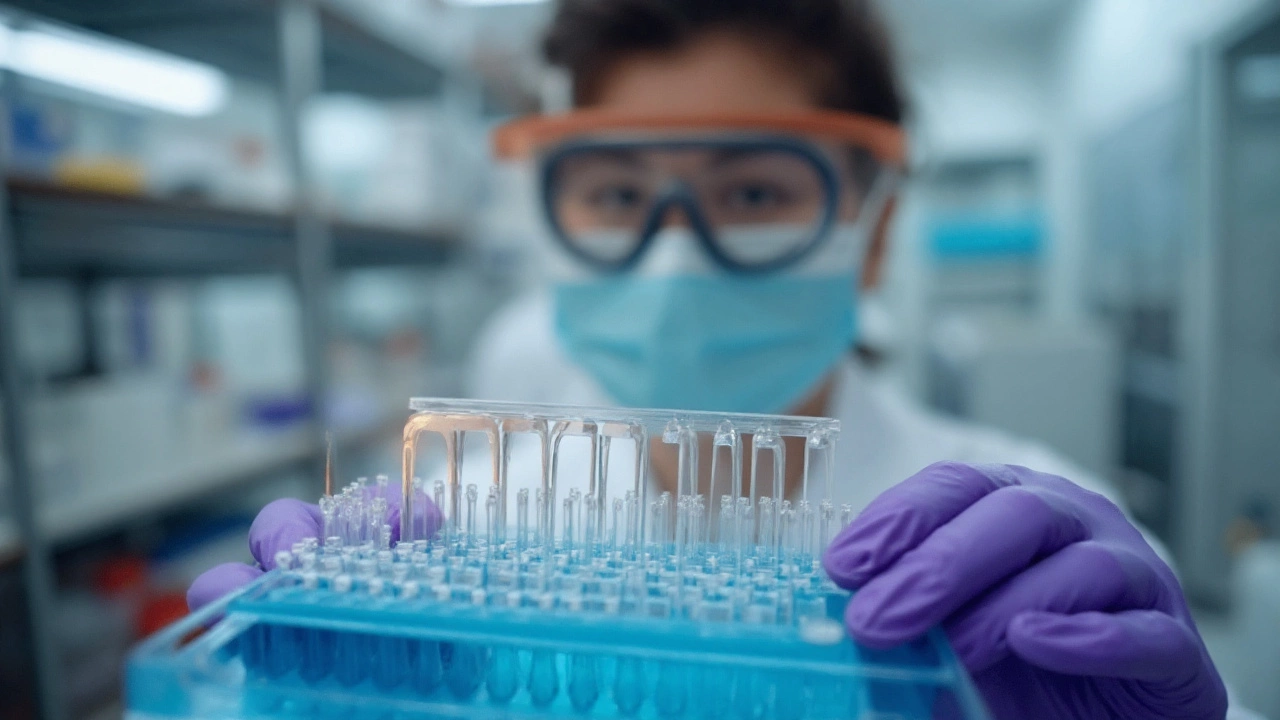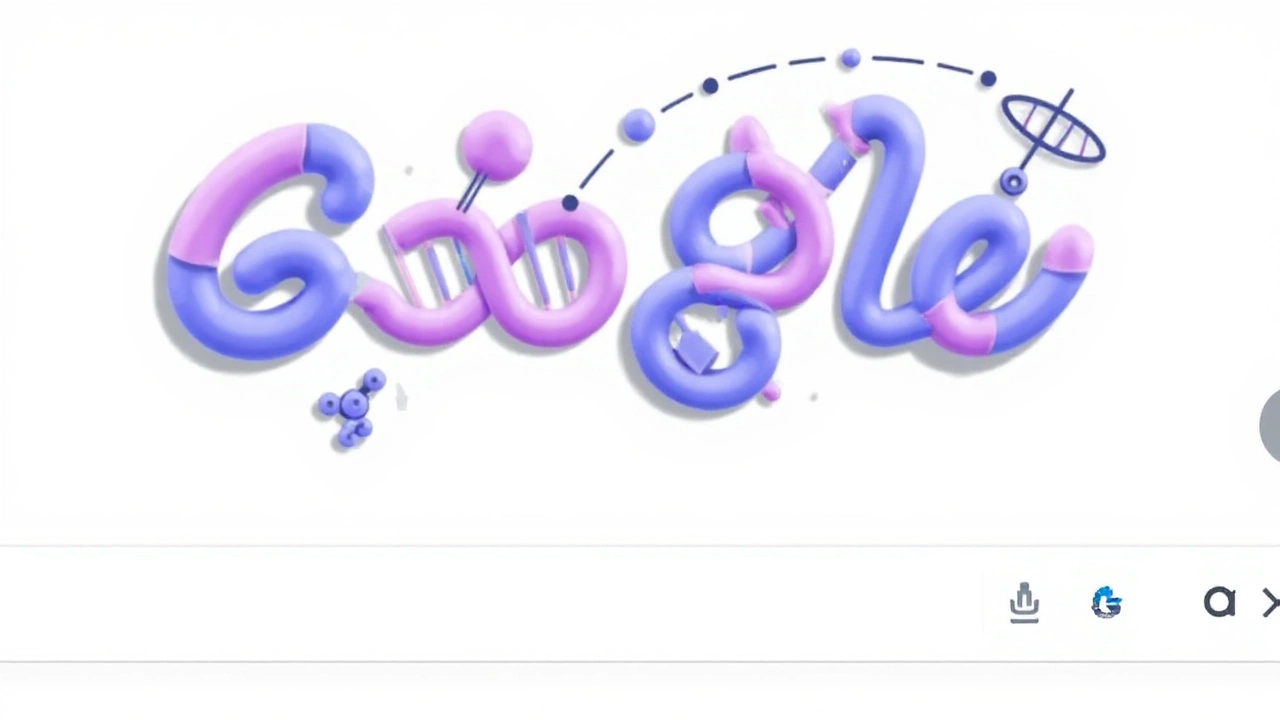A spinning double helix on Google’s homepage turned back-to-school season into a science lesson, and it did more than look pretty. It pushed “DNA” searches to their highest level in five years across the United States, an unusual rush for September, when interest in the topic is normally quieter.
On September 10, 2025, Google rolled out a Google Doodle that put DNA chemistry front and center for the first week of classes. The design wasn’t just decorative. It showed a rotating double helix with callouts to core building blocks—guanine (G), one of the four bases in DNA, and a phosphate group, which links with deoxyribose sugars to form the molecule’s backbone. No individual artist was credited for this one, a sign it likely came from Google’s internal Doodle team.
A back-to-school Doodle with a twist
The Doodle did something else: it changed how you searched. In the morning, clicking it led to the standard results page for “DNA” (deoxyribonucleic acid). Later in the day, it rerouted to Google’s AI Mode with a prefilled prompt that sounded like a student cramming for biology: “I remember DNA has A, T, C, and G… but who decides which ones go where? How does the sequence get set, and what happens if something goes out of order? What’s a memory device I can use on an upcoming test?”
AI Mode responded with the usual on-screen caution that AI answers can make mistakes. That disclaimer matters when the audience is students. Generative systems can explain base-pair rules—adenine (A) pairs with thymine (T), cytosine (C) pairs with guanine (G)—and describe how sequences are copied during replication, but the risk of confident-sounding errors means teachers still urge double-checking with textbooks or class notes.
Even so, the setup was unmistakable: Google used a familiar, friendly front door—the Doodle—to funnel people into its AI experience. The handoff from a static search to an AI prompt framed the topic like a mini-lesson, pushing users to ask more specific questions rather than skim general results.
What made the visual choices smart? The helix animation pulls attention, but the tiny details do the teaching. Highlighting guanine lets students connect the abstract “A, T, C, G” alphabet to a real chemical base. Calling out the phosphate group nudges viewers to see DNA not as a string of letters, but as a chemical structure: a sugar-phosphate backbone with bases stacked like rungs in a twisted ladder.
That framing also fits the season. Early fall is when teachers lay down foundations—cell structure, DNA and RNA, genes and proteins—before moving into more complex genetics. The Doodle made the baseline concepts visible in a way a headline can’t.

Search patterns, AI, and what the spike signals
According to Google’s overview for the day’s artwork, interest in DNA typically climbs during the school year. That’s been true for years. What stood out here was the magnitude. Google Trends data showed DNA queries on September 10 hitting a five-year high in the U.S., approaching the all-time peak since Google started publishing trend data in 2004. For a term that usually peaks around February—likely tied to unit timing and winter exams—the September spike was an outlier.
In plain terms: the Doodle moved people. It didn’t just remind them what DNA stands for; it nudged them to search, click, and ask follow-up questions. Doodles do this from time to time—interactive ones especially—by lowering the friction between curiosity and action. When the homepage itself teaches, curiosity becomes a reflex.
There’s another layer: routing to AI Mode mid-day. That shift shows how Google is trying to blend search and synthesis. Instead of a results page full of links, you’re dropped into a guided explanation with the option to keep asking. It’s a learning loop designed for the classroom mindset—ask, get an answer, refine, repeat.
Still, the school context raises the stakes. Students love quick clarity; teachers care about precision. Google’s on-screen disclaimer that AI can be wrong is doing a lot of work here. That’s particularly true with topics where nuance matters: mutation types, transcription vs. translation, or the difference between DNA and RNA. An AI answer that glosses over detail can confuse more than it helps if a student copies it into notes uncritically.
On the flip side, the prefilled prompt was smartly scoped. It starts with the basics (A, T, C, G), then asks about sequence and error handling—exactly the path a teacher might take in class: base pairing; replication rules; what happens when the order changes (mutations), and their consequences. The final nudge—“What’s a memory device I can use?”—recognizes how students actually study. Mnemonics for base pairs or the central dogma are common in classrooms, and pointing learners toward that approach makes the lesson stick.
The Doodle itself was clean and uncontroversial—no person, no anniversary, no licensing tangles—just imagery that sparks questions. That may explain why it performed so well. A double helix is iconic enough to be instantly recognized but complex enough to invite “how” and “why” questions.
From Google’s vantage point, the day offered a tidy case study in product behavior. Start with a broad, high-interest topic tied to the calendar. Use art to hook attention. Start with conventional search to satisfy quick lookups, then pivot to AI to deepen engagement. Cap it with a disclaimer to acknowledge the technology’s limits. The traffic pattern that followed—an immediate surge, sustained curiosity, and unusually high September volume—suggests the playbook worked.
For schools, it’s a reminder that the search page is now part of the classroom. Some teachers will embrace AI Mode as a brainstorming tool; others will keep it at arm’s length and encourage students to verify with primary sources. Either way, the road runs through the same homepage, and a well-timed Doodle can influence what questions students bring to class.
Zooming out, this is what Doodles do at their best: they turn the web’s front door into a tiny museum exhibit. By making chemistry visible—down to the phosphate backbone—they turn curiosity into clicks, and clicks into learning. And for one September day, that was enough to push DNA to near-record attention in the U.S.
